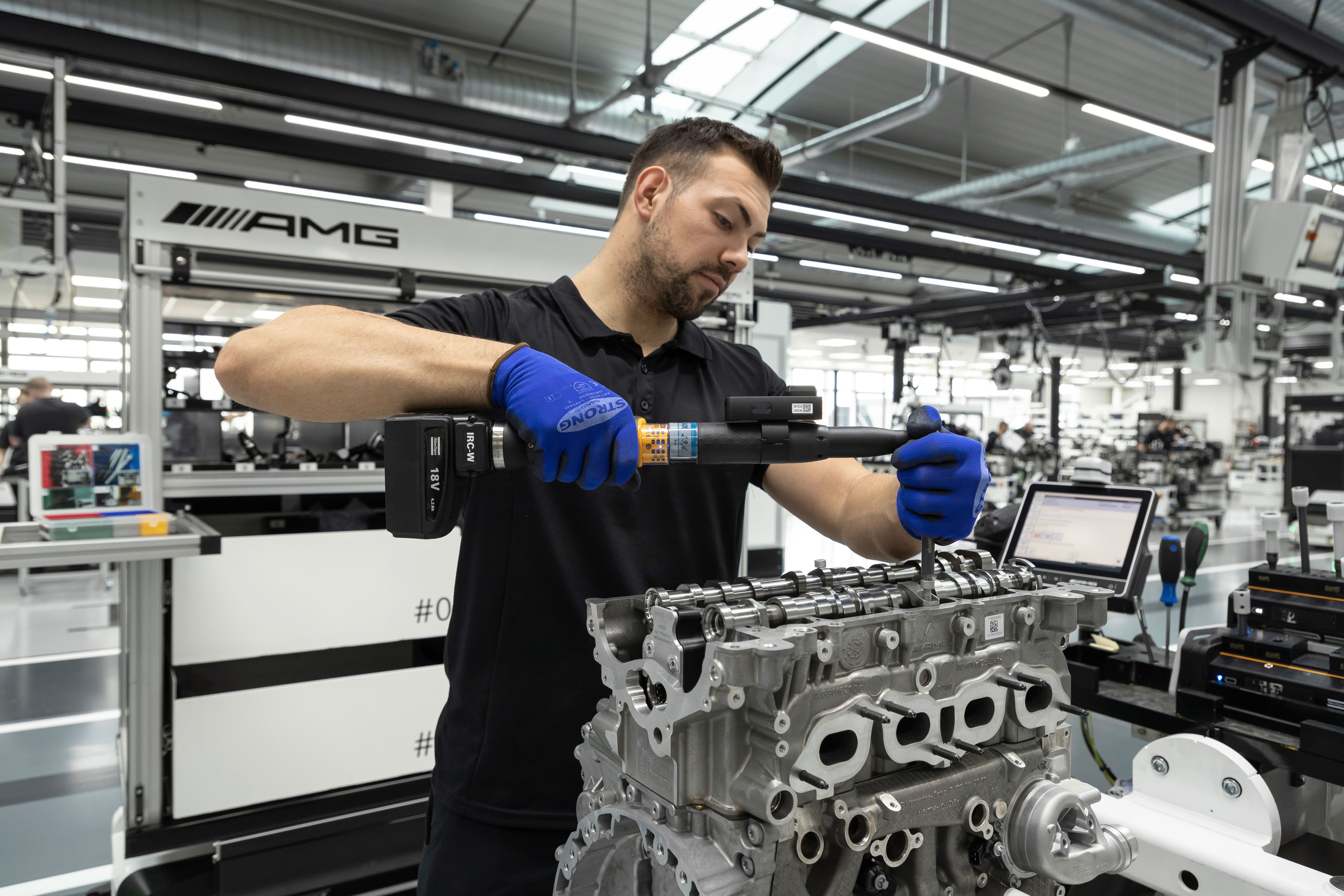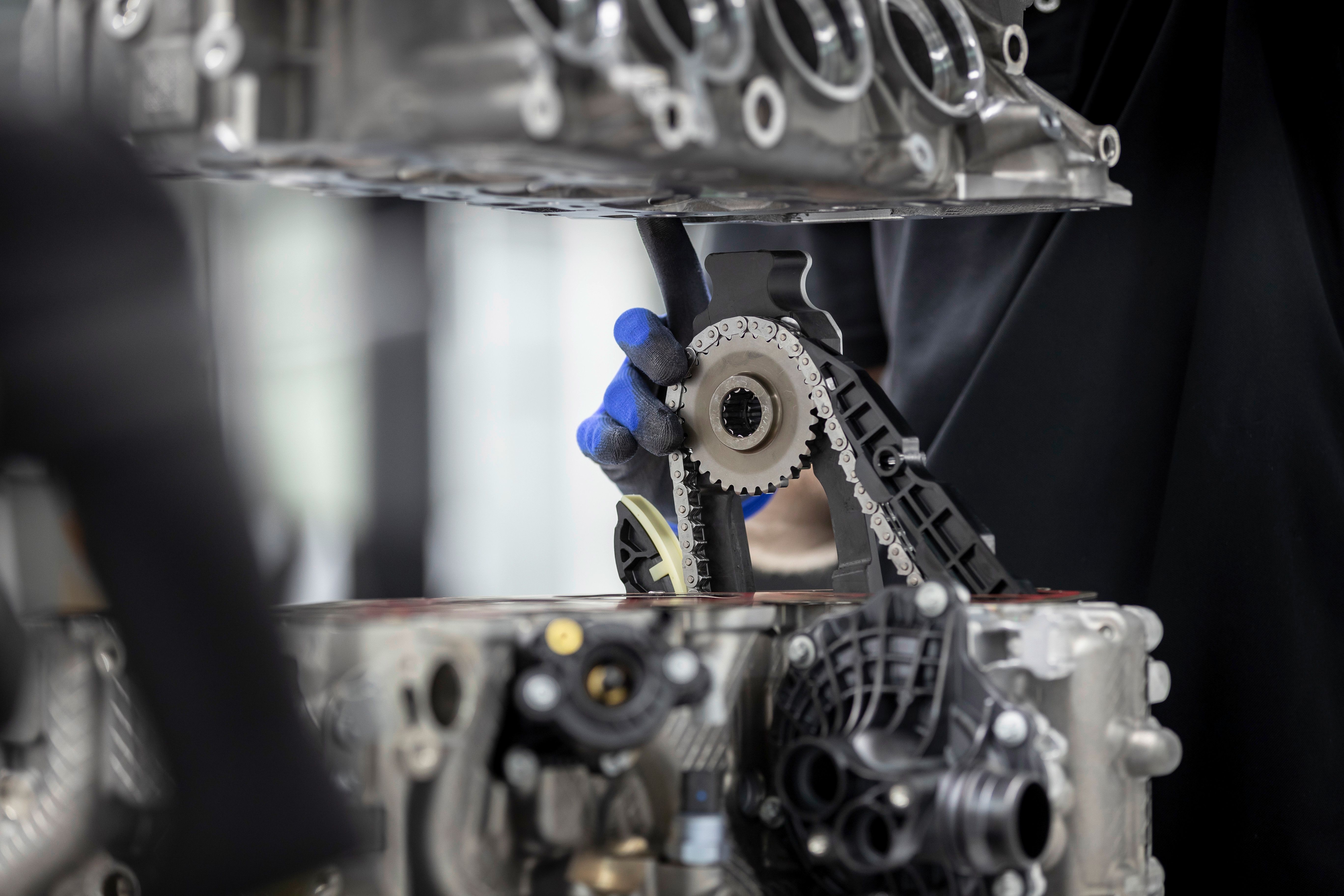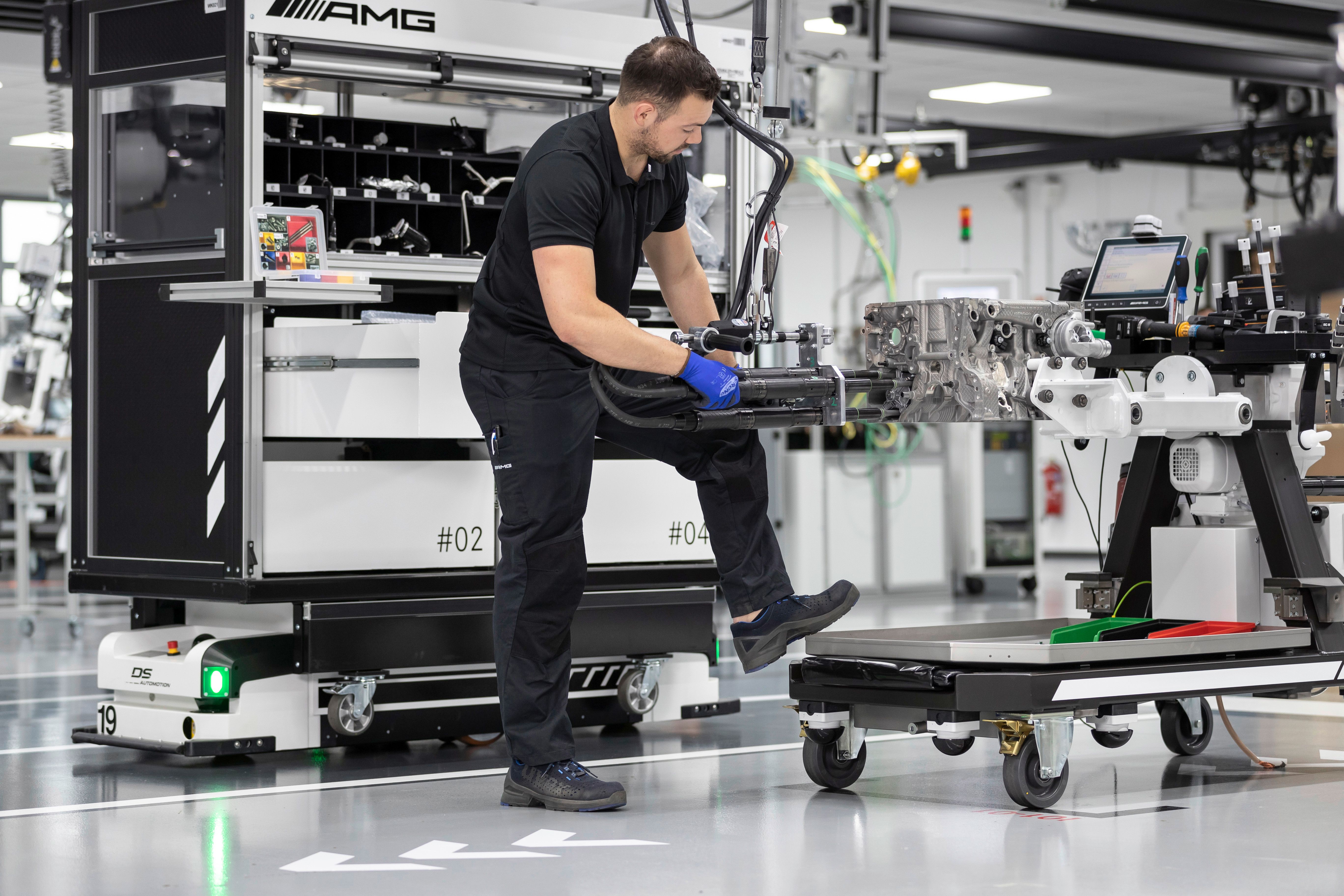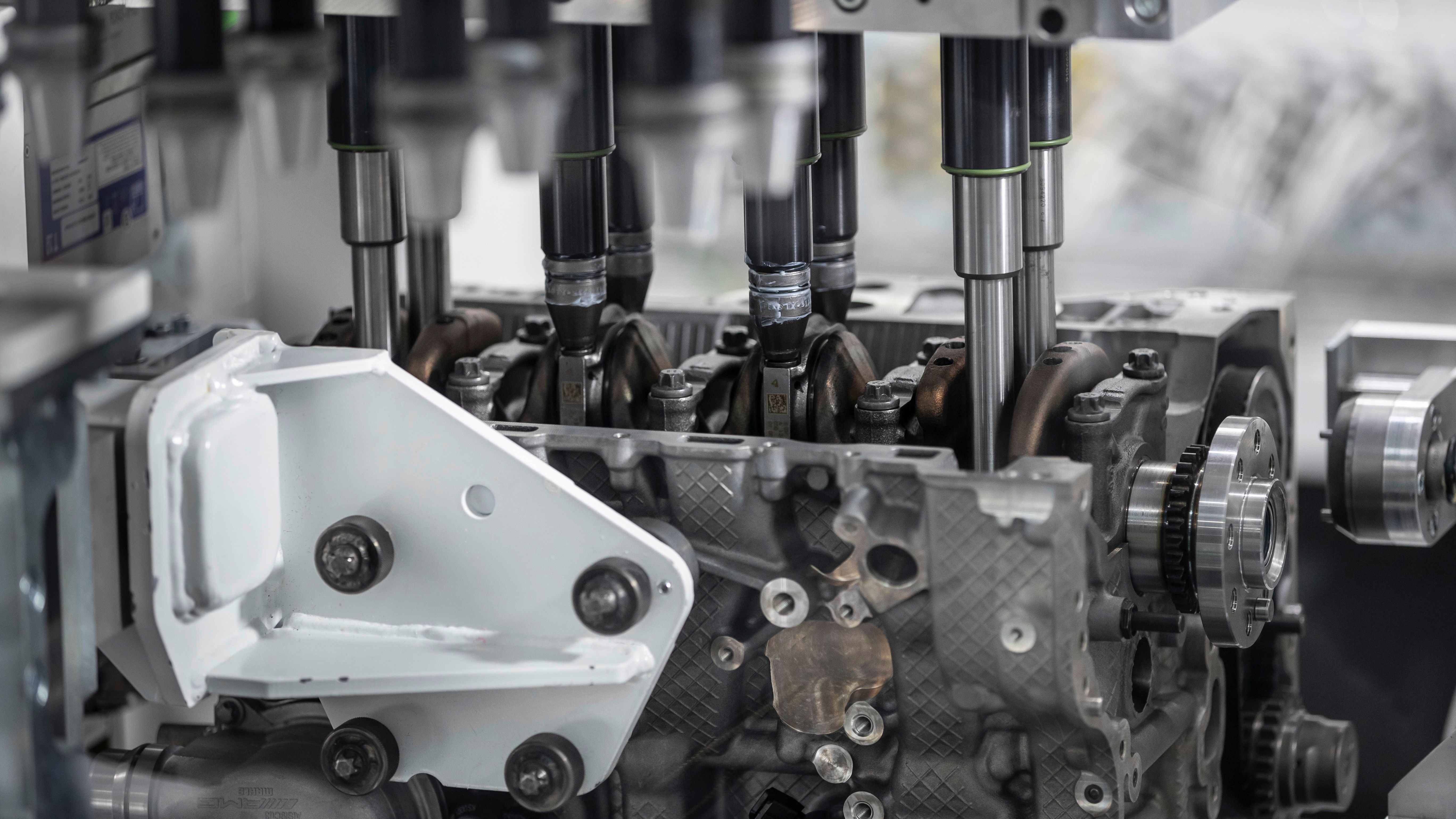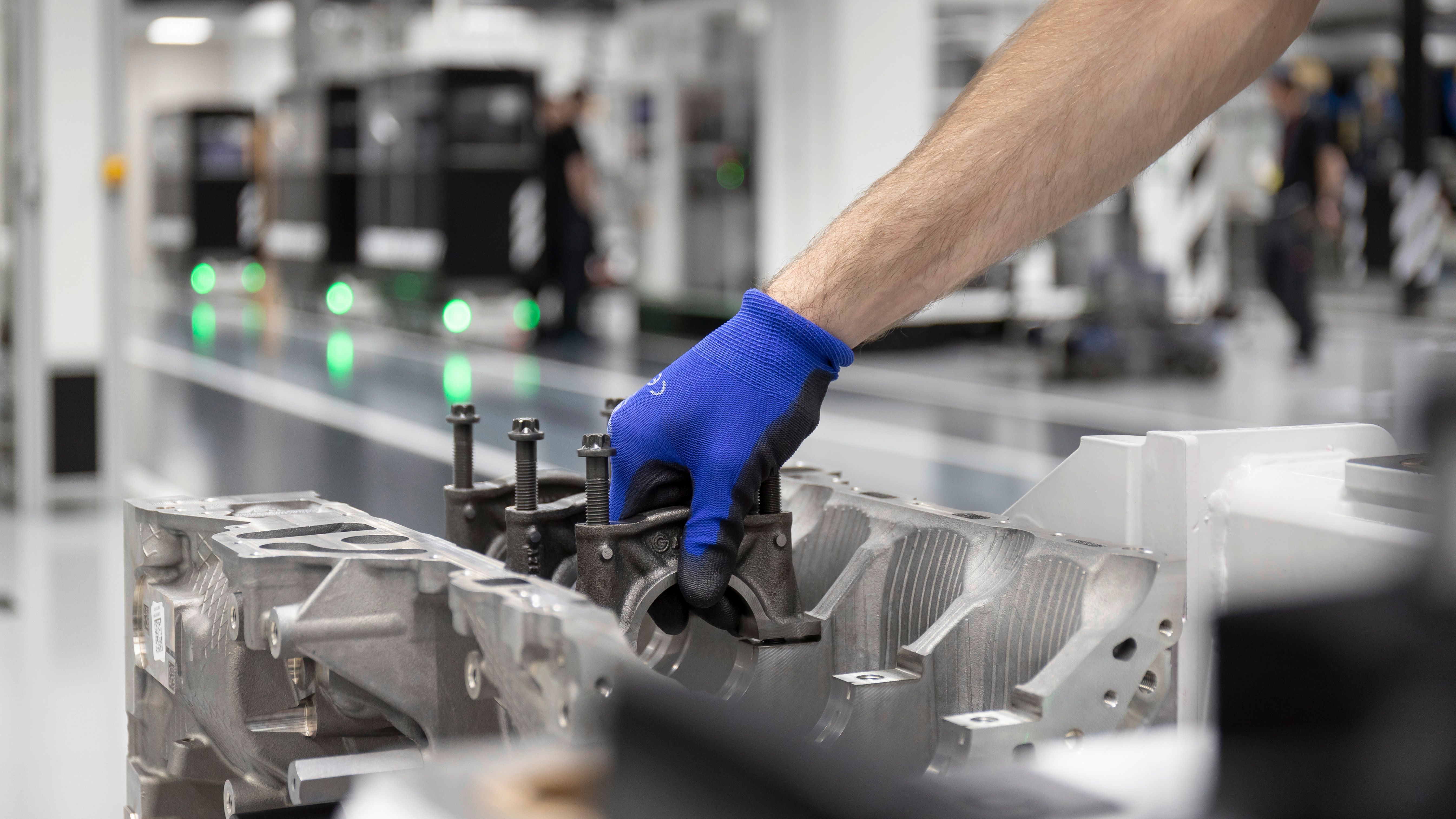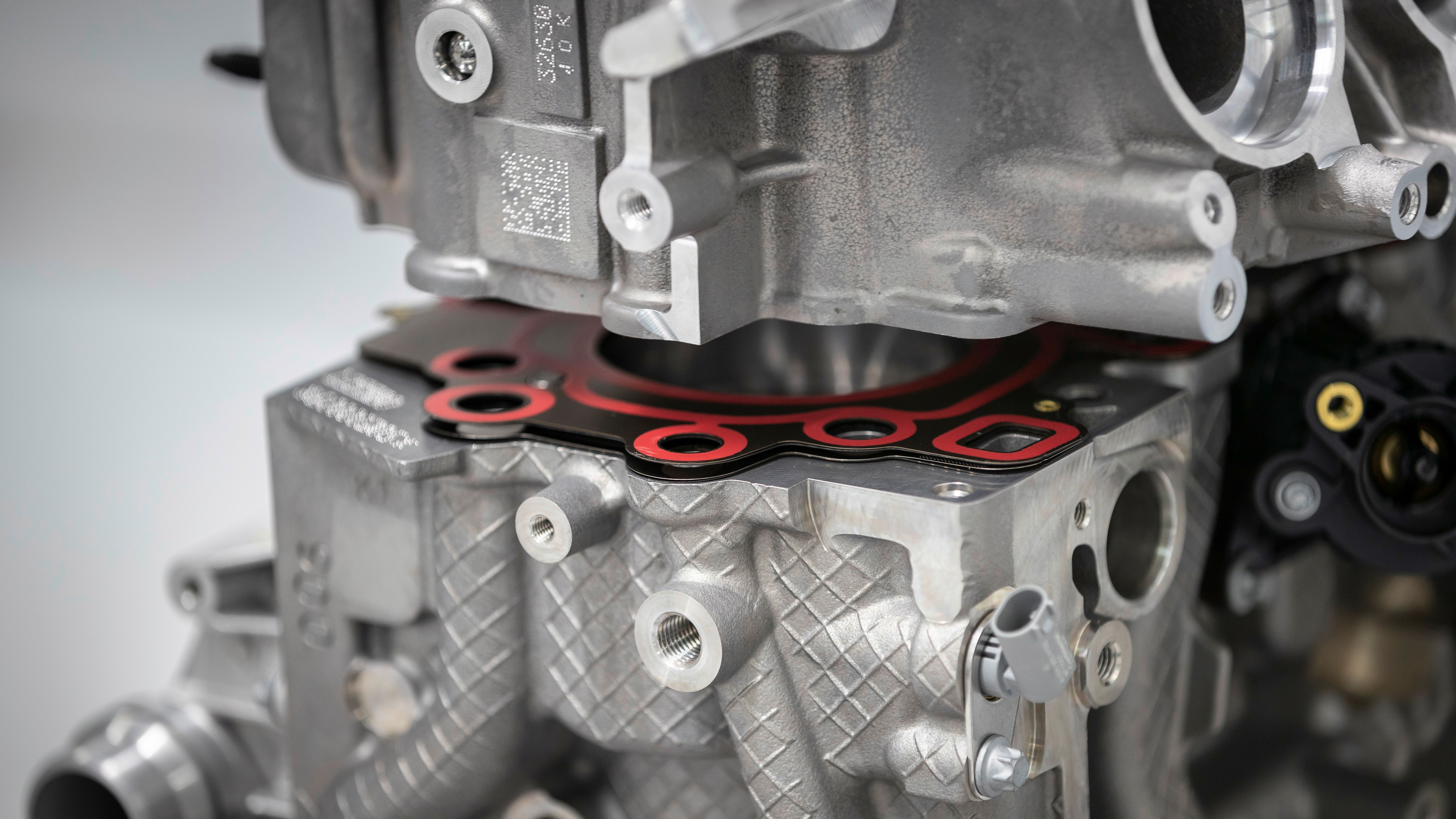We’re really looking forward to the new Mercedes-AMG A45 because it will be powered by a new four-cylinder engine with even more power than the one it replaces. It is a brand new unit, dubbed M139, that according to the manufacturer is the most powerful four-cylinder engine in series production, with an impressive 208 horsepower (211 PS) per liter output.
Mercedes-AMG's New Four-Cylinder Engine
According to Mercedes, this new M139 is 40 horsepower up on the old M133 unit that it replaces, with a rating of 415 horsepower.
The lower-powered version serves up its 480 Nm (354 pound-feet) of torque between 4,750 and 5,000 rpm, while the stronger S version delivers its 500 Nm (368 pound-feet) from 5,000 to 5,250 rpm.
What’s innovative about this AMG's New M139, Four-Cylinder Engine?
Both versions rely on a brand new single twin-scroll turbocharger for boost which, according to Mercedes, provides boost at both low and high revs. This is achieved through a turbine housing that’s split into two parallel flow passages and the manufacturer explains that “the aim is to prevent the individual cylinders from influencing each other negatively during load cycles, and to improve the gas cycle.”
Another innovation has to do with the shafts for the compressor and the turbine which now have roller bearings, just like in the highest output version of the 4.0-liter V-8 used to power the AMG GT-S and the AMG GT 4-Door Coupe. Through the use of roller bearings, the shaft is more responsive and reaches its maximum 169,000 rpm quicker than before.
What this all essentially means from the driver’s seat is that the engine will feel more responsive; there will be less of a delay between prodding the accelerator pedal and the engine waking up to get a move on. Turbocharged engines, especially relatively small four-cylinder engines force-fed by big turbos run the risk of feeling laggy. With this type of quicker-spinning shaft, spool-up time is diminished and responsiveness is improved.
Mercedes also mentions this engine comes with a standard electronically controlled wastegate valve that allows for precise pressure regulation to further enhance responsiveness. Its crankcase is all-aluminum and can withstand pressures of up to 160 bar (2320 psi) and its oil sump features baffle plates that help keep the engine lubricated even during high lateral acceleration when oil usually gathers to one side - it’s been designed for cars that can really corner.
The automaker also seems very proud of the fact that the engine’s cylinders are coated with what it calls NANOSLIDE, a material that is not only designed to minimize friction, but it also happens to double the hardness that can be obtained from regular cast iron.
Mercedes also talks at length about the engine’s sophisticated cooling system that features an electric water pump and how the engine is now assembled by a single person by hand (a principle they call “one man, one engine”), but what we really want to know is what it will feel like from behind the wheel of cars it powers.
What cars will this new AMG M139 power?
Mercedes will put this new M139 under the hood of the A45 and A45 S, but also the CLA 45 and CLA 45 S. Further down the line, it will also power the hottest versions of the new GLA (yet to be revealed) and maybe even the GLB crossover. However, it will be the most fun in the lightest package it will be offered as part of, so our eye is on the 2020 Mercedes-AMG A45 S, the variant that will run the full-power 415 horsepower version of the engine.
In the next A45 S, it should make enough power for a sprint time from naught to 100 km/h (62 mph) in under four seconds - the current A45 achieves the same sprint in 4.2 seconds, so this extra power and torque and possibly a slight weight reduction, it will definitely be improved upon.
What other cars have similar engines?
BMW M135i
BMW recently revealed its most powerful four-cylinder ever, a 302 horsepower (306 PS) and 450 Nm (333 pound-foot) mill that powers the new front-wheel drive-biased M135i. It almost matches the Mercedes unit for torque, but it comes nowhere near it in terms of power. The model it powers, the M135i, is not a direct rival to the Mercedes-AMG A45, but a rival for the lower-powered A35 AMG. Should BMW decide it wants an actual rival for Mercedes’ A45, it will create an even more extreme and powerful version of this engine, but as of right now, the Three Pointed Star is still on top.
Read our full review on the 2020 BMW M135i
Ford Focus RS
You can no longer buy a Ford Focus RS new because the Focus generation it was based on has been phased out and there’s no word when (or if) a new RS is planned. But we can’t ignore the fact that the Focus RS exists, with its 2.3-liter engine that made up to 370 horsepower and 510 Nm (376 pound-feet) of torque in the Focus RS Heritage Edition (limited to just 50 units). Any Focus RS is a future classic, but these last 50 examples are true collectibles and much faster than the regulars RS.
Read our full review on the 2019 Ford Focus RS
Mitsubishi Lancer Evolution FQ400
This is another blast from (considerably more distant) past, one of the most powerful versions of the now-defunct Mitsubishi Lancer Evo FQ400. It wasn’t the single most powerful version ever made, because Mitsubishi also made an FQ440, but it made hardly any of those, so it doesn’t really count. Everybody was talking about the FQ400 around the year 2010, praising it for its 400 horsepower output and its acceleration time to 100 km/h (62 mph) of just 3.8 seconds. As with any Evo, people also loved these for their cornering capability brought about by an advanced, electronically controlled all-wheel drive system - it also had the sheer power to drag itself out of corners like few cars could, even though some laughed at the often huge levels of turbo lag the unit displayed when off boost.
Read our full review on the 2010 Mitsubishi Lancer Evolution FQ400
Mercedes-AMG M 139 2.0 litre turbocharged four-cylinder engine specifications
|
Displacement |
1991 cc |
|---|---|
|
Bore x stroke |
83.0 x 92.0 mm |
|
Output |
310 kW (421 hp) at 6750 rpm (S-model) 285 kW (387 hp) at 6500 rpm (basic version) |
|
Peak torque |
500 Nm at 5000-5250 rpm (S-model) 480 Nm at 4750-5000 rpm (basic version) |
|
Max. engine speed |
7200 rpm |
|
Compression ratio |
9.0:1 |
|
Turbocharging |
One twinscroll turbocharger with roller-bearing compressor and turbine wheels |
|
Max. charge pressure |
2.1 bar (S-model) 1.9 bar (basic version) |
|
Mixture formation |
Combined direct and manifold injection. 1.) Third-generation multiple direct injection. Fast and precise piezo injectors spray the fuel into the combustion chambers at high pressure 2.) Additional intake manifold injection with solenoid valves |
|
Cylinder head |
Two overhead camshafts, 16 valves, adjustable intake and exhaust camshafts, CAMTRONIC valve timing adjustment for the exhaust camshaft |
|
Max. air mass throughput |
1,200 kg/h (S-model) 1,100 kg/h (basic version) |
|
Engine weight (wet) |
160.5 kg |
Further reading
Read our full speculative review on the 2020 Mercedes-AMG A45.

